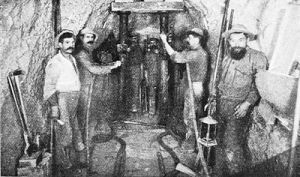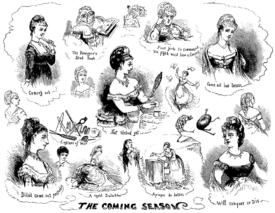 The leaves are starting to fall outside La Loubiere, the 16th century château where we are spending this last weekend of the autumn school holidays and with the kitchen door open early while everyone sleeps, I listen to the mesmerising sound of the wind in the trees and think about the change of the seasons. It does not seem so long ago that spring was here, when the bulbs that had lain dormant for the winter were poking their green stems through the surface.
The leaves are starting to fall outside La Loubiere, the 16th century château where we are spending this last weekend of the autumn school holidays and with the kitchen door open early while everyone sleeps, I listen to the mesmerising sound of the wind in the trees and think about the change of the seasons. It does not seem so long ago that spring was here, when the bulbs that had lain dormant for the winter were poking their green stems through the surface.
Now we wait for the period of stillness and hibernation, something we know very well, because in a sense we too have been in a kind of perennial hibernation, waiting for our daughter’s voice to emerge in the classroom and speak for the first time in school.
Now our spring has come and just like the association of supportive parents Ouvrir La Voix, she has finally opened her voice after more than five years of silence. She now speaks to almost all her classmates and we have one hurdle left, level 10 in the book that has become my bible – to speak to a teacher or adult in school.
It is hard to believe it has been five years. It is hard to believe that for the first three years we didn’t know what we were dealing with, that it even had a name. Perhaps if we had lived in America or Great Britain, we may have discovered those words earlier – or maybe this condition would not have even manifested.
Here in the south of France, selective mutism is unknown and with our daughter in a French school where interventions to assist children are commonplace and often successful, we were happy to follow the advice and recommendations of the school psychologist (every school has one), an orthophoniste (speech therapist), a psychiatrist and our doctor, all of whom were willing to help and in the case of our doctor, advised and reassured us that it was just a matter of time.
Three years on, having made zero progress, it was all to change late one evening after a telephone call with my Uncle, when he mentioned that he had been speaking with a friend in Los Angeles whose daughter had the same thing as ours.
“What thing?” I said.
“You know” he said, “the not speaking in school thing.”
“It has a name?” I almost shout. “Call her back now and ask her what it is.”
He did and through his friend then passed on those two words selective mutism, or mutism selectif in French, two words that not one of those health professionals had known of or discovered to suggest to us. We weren’t looking for a label, we were searching for a solution and we’d been looking in the wrong place. Our programme of intervention was about to take a different path, one used successfully by parents in the know, only we would not have the same support, as to take this route was effectively to reject the existing system.
But to tell this story properly, it is necessary to go back even further, to understand events that lead up to this moment and because despite trying to change the title of this episode and make it shorter, my creative daughter who has already finished the artwork, is telling me to write this second part now and include her picture. So here’s the bit about not living in France!

We are not living in France!
*
When I was six months pregnant we came to France for a 2 week holiday from London. We were toying with the idea of moving here, at least I was, for my husband it would be a return.
My body was changing and the world around was about to change significantly. One afternoon I returned to the hotel in Marseille to rest and as I passed the reception, I noticed all the employees looking at the television, watching what looked like the demolition of a couple of council buildings. I thought it strange that all the staff were watching TV in the middle of the afternoon, so when I got to the room I too turned on the television. I couldn’t understand the words spoken in rapid French, but I could read the subtext. It wasn’t a couple of council buildings at all; it was the twin towers of the World Trade Centre in New York.
During that holiday, we looked at a couple of apartments and houses, I sat through long-winded appointments with real estate agents, tried to understand menus and the rapid-fire French coming from that TV, all on a roller coaster of emotions and hormones, understanding little beyond Bonjour and Au Revoir, two basic expressions I thought I could pronounce, but listening carefully, I realised I’d been giving their syllables way too much emphasis, goodbye sounded more like ‘of waa’ than the expression I’d learnt to say.
I became disillusioned with the idea of living in France, I had long ago discarded that child-like submission of accepting things the way they are, being secondary to decision-making. Making decisions and understanding what leads to them is not something one gives up and neither was I interested in putting it on hold while coming to terms with a new language. I freaked out. No way was I coming to live here, a new language, a new city, a new baby, all things where I would be required to start again from the beginning. Absolutely no way I told myself.
Returning to London, the queues were horrendous, airport security was tight and there was no other subject being discussed other than the events that had occurred in New York. And they were beginning to have a trickle-down effect. I was concerned because I worked in the travel industry which was sure to be impacted and sure enough, within two weeks of our return, I was advised that my job was no longer required at a time when I knew I had no chance of finding another, not with a very obvious baby protruding from my mid-section.
Next up: Episode 3: The Benefits of Contra-Indicated Essential Oils!
Click below to read Previous Episodes of A Silent Education: Our Quiet Challenge in Provence
Introduction
Episode 1 The Benefits of Insomnia
43.529742
5.447427
 Hugo knows she has a night life that his parents aren’t aware of and begins to follow her to try to discover where she goes and what she does. He is equally afraid, given his own history of instability and wonders if it may be himself who is responsible and though he cannot prove it, it is to hear his confession and description of what he found at the scene of the murder of one of his friends, that opens the first pages of the novel. It is Hugo who narrates this story of how the savage girl came into their lives and all the events that followed.
Hugo knows she has a night life that his parents aren’t aware of and begins to follow her to try to discover where she goes and what she does. He is equally afraid, given his own history of instability and wonders if it may be himself who is responsible and though he cannot prove it, it is to hear his confession and description of what he found at the scene of the murder of one of his friends, that opens the first pages of the novel. It is Hugo who narrates this story of how the savage girl came into their lives and all the events that followed.






 The leaves are starting to fall outside La Loubiere, the
The leaves are starting to fall outside La Loubiere, the 